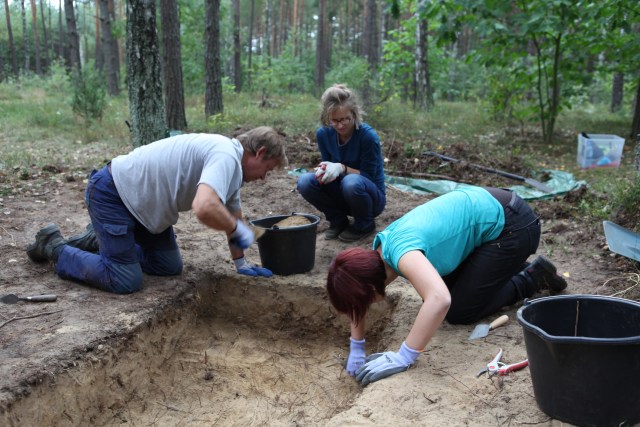Treblinka Death Camp Secrets Revealed By High Tech Archaeologist In New TV Documentary
Secrets of the Nazi Treblinka death camp have lay buried, literally, for more than 70 years. But a British forensic archaeologist using 21st-century technology has uncovered the first physical evidence that some of the most horrific atrocities in human history, described by Holocaust survivors as well as in confessions of Nazi guards, actually took place there.
The disturbing new findings by a team led by Staffordshire University archaeologist Caroline Sturdy Colls are revealed in a Smithsonian Channel documentary, Treblinka: Hitler’s Killing Machine, that premiered Saturday, and will be repeated throughout the week.
In just over one year, between July 1942 and Octber 1943, an estimated 1.6 million people were slaughtered en masse at Treblinka, outside of Warsaw, Poland, mostly in the Nazi gas chambers at the Treblinka II death camp facility. About 900,000 of the victims were Jews.
The remainder were others labeled as “undesirables” by the Nazis, including thousands of Romani — once known by the derogatory epithet “gypsies” — whom Adolf Hitler’s Nazi regime also targeted for extermination.
But in 1943 the Nazis attempted to destroy all evidence of what happened at Treblinka. They burned and bulldozed the entire facility, burying the death camp secrets underground. Or so they thought.
After the war, the destroyed death camp was designated as a memorial and out of respect for the victims who remained buried there, archaeological digs to uncover the camp’s secrets were prohibited.
Only the recollections of survivors and other eyewitnesses, including some of the guards, have allowed historians to piece together a full picture of how Jews were herded from trains, told they were being taken to a mikva, or Jewish ritual bath, which was actually a gas chamber where they were murdered by the thousands.
But Sturdy Colls was certain that tangible evidence of the Treblinka death camp remained.
“They did a very good job of hiding it, but in actual fact, they didn’t ‘sterilize’ this landscape,” she said. “They weren’t that efficient.”

The Treblinka I camp was a forced labor camp where Jews and others dug gravel. While thousands were summarily executed there, Treblinka II was purely a death camp, where the gas chambers were located.
Sturdy Colls took six years painstakingly searching for the location of the gas chambers and their structure using sophisticated aerial photography, laser scanning, digital analysis and other futuristic tools that enabled her team to detect even slight variations in the landscape that indicated where man-made structures once stood, seven decades ago.
Her excavations, approved by the Polish government and Jewish religious authorities, were then limited to only the areas most likely to yield the Treblinka death camp secrets.
“Without that technology, I never would have been able to do this work at Treblinka, because no one wanted excavations there,” Sturdy Colls said. “Nobody wanted the ground to be disturbed unnecessarily.”
In addition to human bones, Sturdy Colls found tiles with a Jewish Star of David imprint — matching descriptions of survivors who told how the gas chambers were designed on the outside to look like ritual baths, as Jews were told they were merely being taken to a “transit” camp at Treblinka.
Sturdy Colls and her team also uncovered the foundation of a gas chamber structure.
In keeping with the the mission to disturb the Treblinka death camp site as litte as possible, the human remains uncovered by Sturdy Colls were re-buried in their graves, leaving some of the most terrible secrets of Treblinka exactly where they have been buried since 1943.









